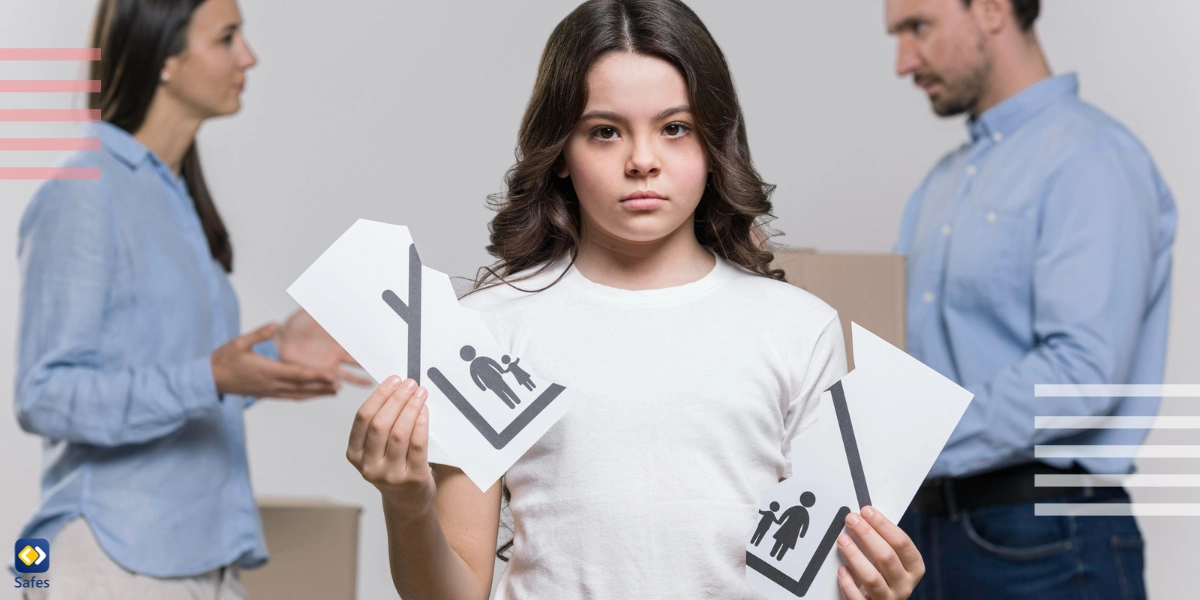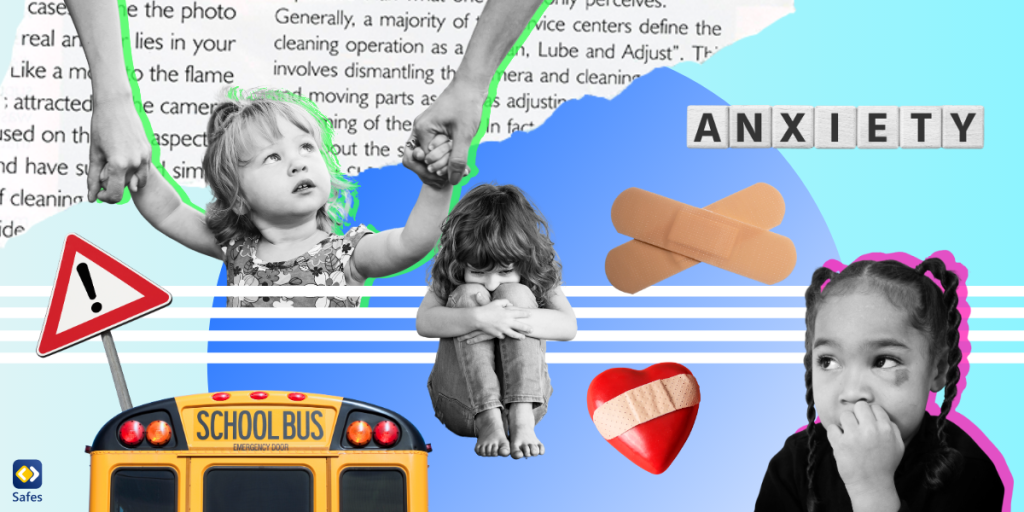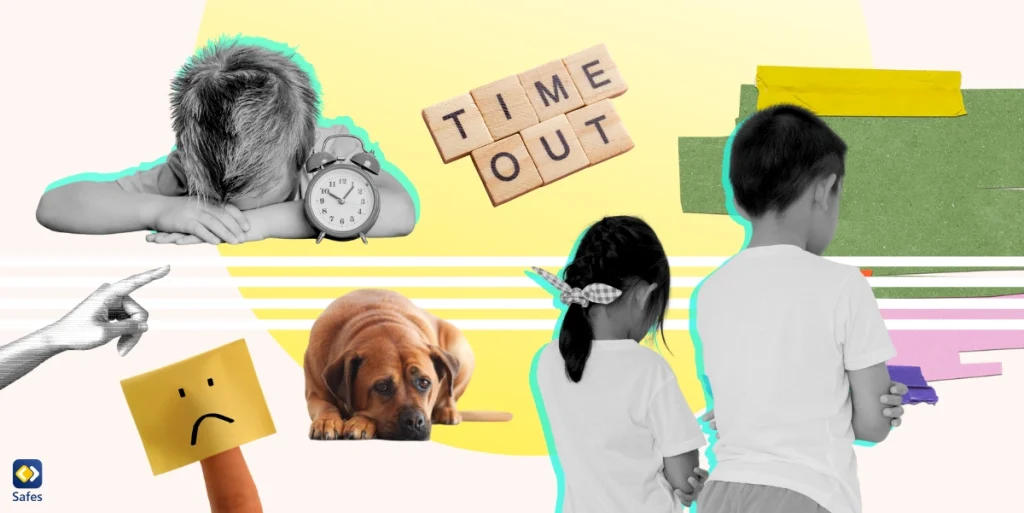Co-parenting can be difficult for divorced or separated parents. You and your ex may have opposing parenting approaches or find it difficult to communicate and collaborate. This is when parallel parenting might come in handy. Parallel parenting is a parenting arrangement in which divorced parents separate as much as possible and focus on parenting independently. While more collaborative techniques to co-parenting are preferable, parallel parenting can be a viable option when collaboration and communication are limited.
Download and Start Your Free Trial of the Safes Parental Control App
What is Parallel Parenting?
Parallel parenting’s definition involves divorcing parents establishing distinct, separate households and parenting styles. The goal is to allow each parent to have their own rules, routines, and approaches with the children, while avoiding direct interaction or conflict with each other.
Some key aspects of parallel parenting include:
- Separate households and schedules. Children split time between two distinct households.
- Limited communication/coordination between parents. Communication is focused just on essential logistics like schedules and emergencies.
- Established boundaries and guidelines. Clear boundaries outline each parent’s responsibilities and authority during their parenting time.
- United front toward children. Parents avoid criticizing or undermining each other in front of the children.
- Focus on the parent-child relationship. Parents disengage from each other and focus on their individual relationships with their children.

Co-Parenting vs Parallel Parenting
Parallel parenting is most appropriate in high-conflict situations where parents have difficulty cooperating and communicating in a positive manner. It recognizes that a cooperative co-parenting relationship may not be possible or desirable for some divorcing parents.
Parallel parenting can work as an interim arrangement or long-term plan. It may be helpful after a divorce when emotions are raw and tensions high. Over time, some parents evolve to a more collaborative approach as their parenting stress also calms down. For others, parallel parenting serves as a workable long-term plan.
Making Parallel Parenting Work
Parallel parenting requires planning, strong boundaries, and discipline from parents. Here are some tips:
- Establish a parenting plan detailing each parent’s responsibilities and parenting schedule.
- Communicate logistics only through designated methods like online calendars or notebooks.
- Conduct exchanges or transfers of children quickly and with business-like precision.
- Develop household rules and routines that work for your home.
- Focus on quality parent-child time rather than competing with ex-spouse.
- Remain calm and disengage during conflicts; do not argue in front of children.
- Be flexible when needed but maintain boundaries and resist control issues.
- Get support from professionals or parallel parenting support groups.

The Challenges of Parallel Parenting
Parallel parenting has its critics and challenges. Some drawbacks include:
- Children must transition between very different household environments.
- Reduced communication can lead to logistical confusion.
- Parents have less knowledge about children’s daily lives.
- May reinforce parental conflict rather than resolve it.
- Requires strong boundaries some parents struggle with.
Parallel parenting is not for every family, but it can offer an important coping mechanism for conflict-filled co-parenting relationships. With maturity and discipline from parents, it may allow divorcing parents to disengage from unhealthy conflict and focus on meeting the needs of highly sensitive children.
How Parental Controls Can Help With Parallel Parenting Plans
Parental controls and parental control apps can play a crucial role in facilitating parallel parenting by providing tools and features that contribute to a more structured and controlled digital environment. Default parental controls include Windows parental controls, MacBook parental controls, iPhone parental controls and the parental controls on Android. You can also choose a better third-party parental control app like Safes which is available across multiple platforms including iOS and Android. Feel free to sign up for Safes’ 14-day free trial today without the need for a credit card to explore its full range of features. Here’s how Safes can assist in parallel parenting:
Screen Time Management
Safes offers robust screen time management tools. Parents can set limits on the amount of time children spend on devices, ensuring consistency between households. This promotes a structured routine for the child, which is essential in parallel parenting.
Content Filtering and Monitoring
Safes can restrict access to inappropriate content, ensuring that children have a consistent online experience across both households. This feature helps parents maintain a shared understanding of what is acceptable for their child.
Geofencing and Location Tracking
Safes provides location tracking features. This can be especially useful in parallel parenting situations, as it allows both parents to ensure the child’s safety and verify their location without direct communication.
Emergency and Contact Information
Safes can store important emergency contact information, medical details, and other critical data. This ensures that both parents have quick access to essential information, promoting a sense of security for the child.
Consistent Rules and Expectations
Safes comes with customizable settings. This allows each parent to set rules and expectations that align with their parenting style while maintaining consistency in overall guidelines for the child.
By incorporating these features, parental control apps support parallel parenting by providing a digital framework that allows both parents to actively participate in their child’s life while minimizing direct communication and potential conflicts. Safes can contribute to a more harmonious digital parenting experience by focusing on the well-being of the child and promoting consistency in rules and routines across different households.
Conclusion
Parallel parenting enables divorced parents to establish separate, fully-functioning households and take ownership of parenting their children, while avoiding destructive conflict that drags children into the middle. While demanding, parallel parenting can allow children to have healthy relationships with both parents. For parents unable or unwilling to collaborate together, it offers an option to meet children’s needs. With careful planning, strong boundaries, and a commitment to children’s well-being, parallel parenting can be an effective approach.
Your Child’s Online Safety Starts Here
Every parent today needs a solution to manage screen time and keep their child safe online.
Without the right tools, digital risks and excessive screen time can impact children's well-being. Safes helps parents set healthy boundaries, monitor activity, and protect kids from online dangers—all with an easy-to-use app.
Take control of your child’s digital world. Learn more about Safes or download the app to start your free trial today!




